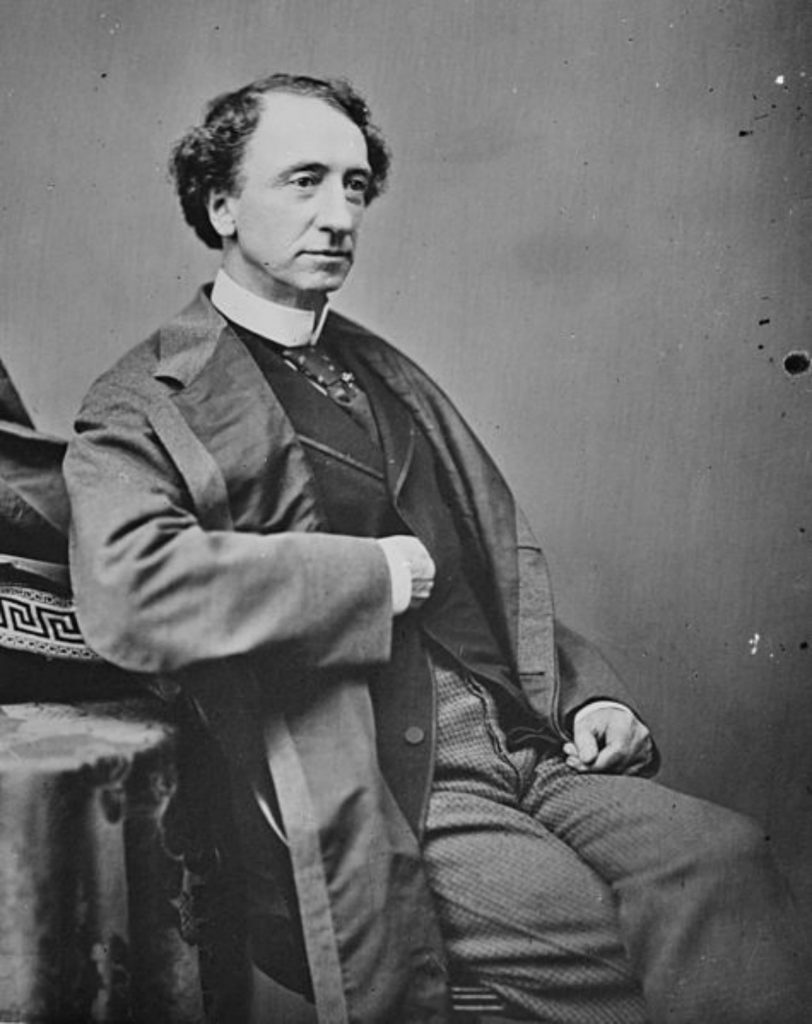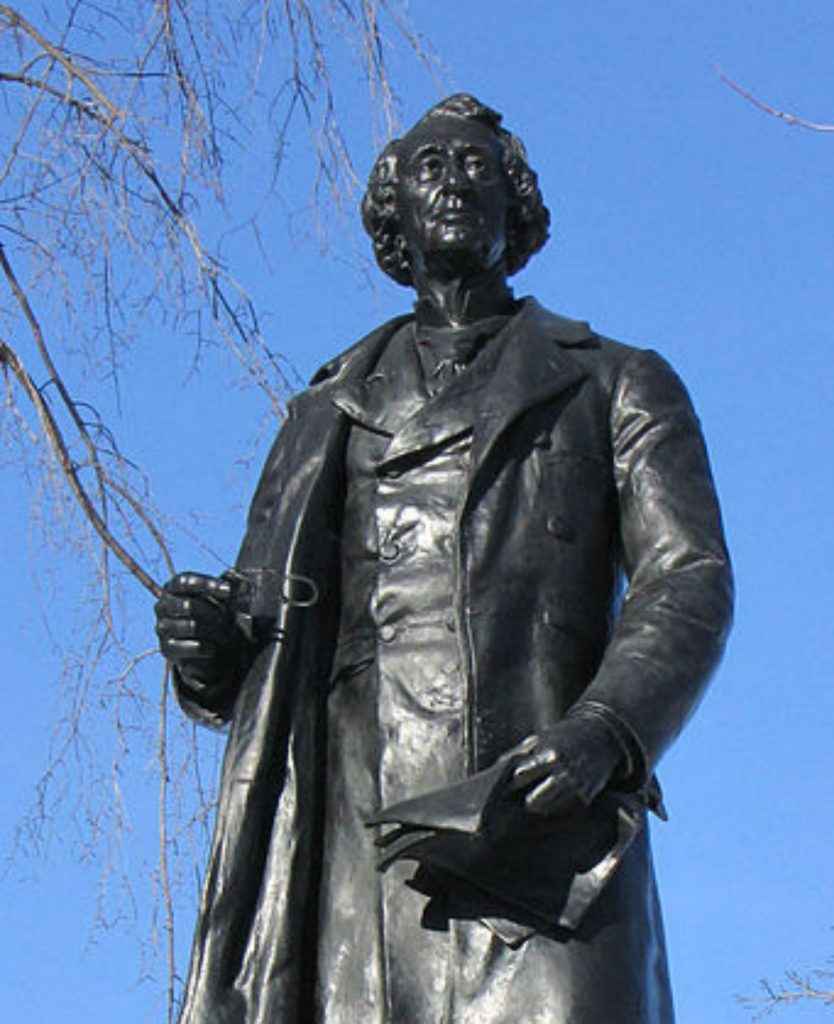THE Scot who founded Canada is to have his face removed one of the country’s banknotes amid a row over “cultural genocide”.
Sir John A Macdonald, who negotiated the deal that established the Canadian state and served twice as Prime Minister in the late 19th Century, has featured on the country’s $10 note since 1971.
But demands have been growing to scrap anything bearing his name because of the way he treated the indigenous population.

His replacement on the $10 note will be civil rights activist Viola Desmond, who in 1946 stood her ground in a whites-only area of a Nova Scotia theatre, receiving a fine and a jail sentence.
It comes as the country looks to honour past heroes who have fought for social justice and human rights.
The new series of notes will be released by the Bank of Canada towards the end of 2018. A bank spokesman said: “Viola Desmond was a woman who broke down barriers, who provided inspiration to Canadians on social justice issues and showed that each and every one of us, individually can make a difference.”
President of Historica Canada, Anthony Wilson, added of Macdonald: “Many native leaders have argued that so long as he and other past oppressors are still honoured the path to reconciliation will be incomplete.”
The move comes after a national debate over whether Macdonald should be excluded from anything bearing his name – including bank notes, schools and airports.
The row centres around the Indian Act, brought in by Macdonald in 1876, which resulted in 100,000 native Canadian children being forcibly taken away from their parents.
The youngsters were sent to institutions to try to remove the “savage” influence of their parents.

Instead, many of the youngsters were subjected to sexual and physical abuse at the hands of the people supposed to “civilise” them.
The Indian Act was recently labelled “cultural genocide” by a national commission and a motion has been passed by the Elementary Federation of Ontario calling for Macdonald’s name to be stripped from nine schools.
Felipe Pareja, a French teacher who proposed the change, said: “They are not comfortable things to talk about but that doesn’t make it any less necessary to talk about them and to acknowledge them. This is about truth and reconciliation.”
These views were echoed by campaign group Idle No More. Spokeswoman Tori Cress said: “I don’t see how we should be glorifying individuals like this in such a public place as schools.
“This is not about erasing history. It’s about putting it in its proper place.”
Whilst the proposal also triggered Colonialism No More and the Saskatchewan Coalition Against Racism to launch a petition to have Macdonald’s statue removed from Victoria Park in the city of Regina, capital of Saskatchewan.
According to media reports in Canada, their petition read: “We, the undersigned, hereby petition the Council of the City of Regina, as part of the process of reconciliation, to authorize and arrange for the removal of the statue of John A. Macdonald from Victoria Park.”
“And to arrange for it either to be stored out of public view or to be placed in a museum where it can be used to educate the public about the history it embodies.”
Explaining the policy in 1883, Macdonald said: “When the school is on the reserve the child lives with its parents who are savages. He is simply a savage who can read and write. In central training industrial schools they will acquire the habits and modes of white men.”
But the moves to airbrush Macdonald have been opposed by several prominent Canadians, including Kathleen Wynne, the Premier of Ontario.
She argued: “We need to teach our children the full history of this country, including colonialism, our indigenous peoples and their history and what our founders did to create Canada and make it the country it is.”
And Don Cummer, the organiser of an annual kilted ice skating event in Macdonald’s honour, called for balance. “His legacy is a mixed one and it’s good to remind ourselves that our heroes have not always been on what we today consider the right side of moral issues”, he said.
Macdonald was the first Prime Minister of Canada, from 1867-1873, serving again from 1878-1891.
He was born in Glasgow on January 11, 1815. In 1820, his family moved to Kingston in the Province of Upper Canada after his father’s business ventures had left them in debt.
After leaving school he went to law school and qualified as a lawyer in 1836. He was involved in several high-profile cases and quickly became prominent in Kingston, which elected him in 1844 to the legislature of the Province of Canada.
By 1857, he had become Premier under the colony’s unstable political system. He was the leading figure in the political reform which led to the birth of Canada as a nation in 1867 and became Prime Minister, serving for a total of 19 years.
A stroke in 1891 left Macdonald partially paralysed and unable to speak and days later, on June 6, he died. His open casket was visited by thousands before his body was transported to Kingston where he was buried next to his first wife Isabella.
During his time as Prime Minister the transcontinental railway was built and there are also rivers, buildings, statues and airports named after him across the country.
Elsewhere similar debates are raging on over controversial historical figures in the United States, South Africa and Australia.
Last month in Charlottesville, Virginia, white supremacists protested against the removal of the statue of General Robert E Lee, who commanded pro-slavery Confederate forces during the American civil war.
Whilst in Australia, another controversial Scottish political figure has resulted in calls for his name to be removed from the country’s most southern electoral district.
Angus McMillan, regarded as one of Australia’s founding fathers, massacred Aboriginal people to clear land for sheep farmers.
In 2015, a similar row erupted in Cape Town, South Africa over the 1934 statue of British colonialist Cecil Rhodes, with calls for it be taken down after his role in the annexation of vast swathes of land in the country.

